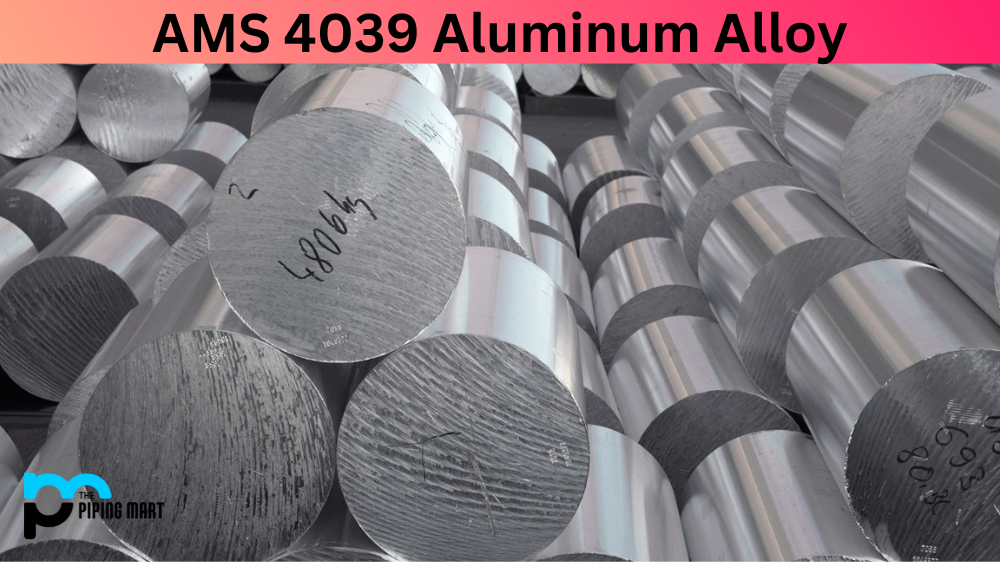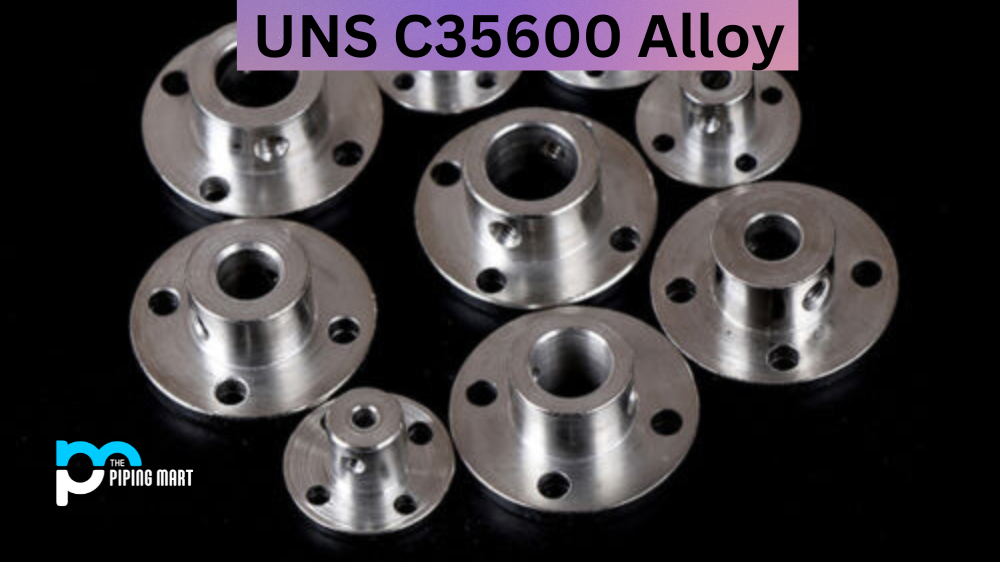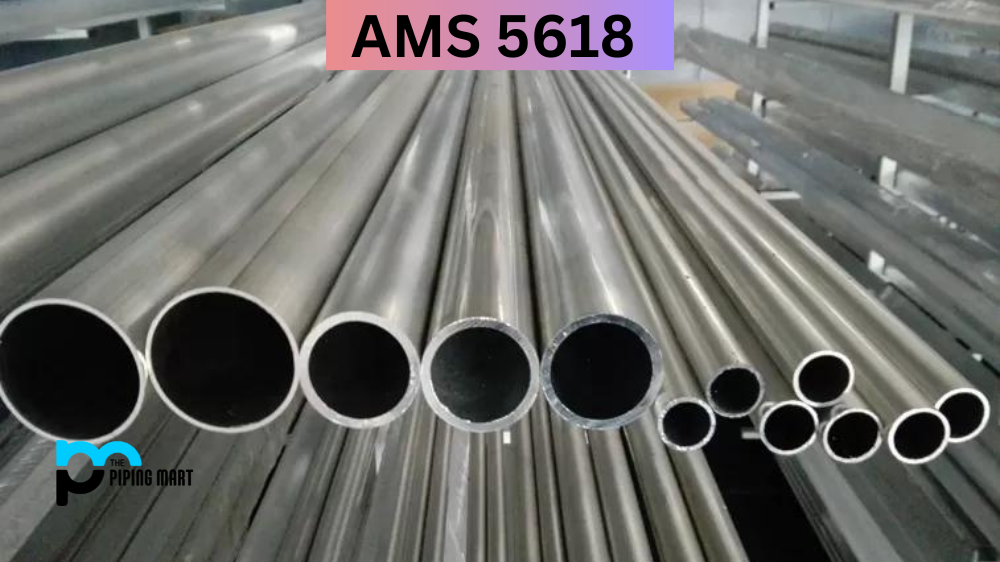Aeronautical Material Specification, or AMS, is an essential standard for materials used in the aerospace industry. AMS 4039, in particular, is a high-strength aluminium alloy that provides excellent toughness and resistance to fatigue. Understanding the composition, physical and mechanical properties, hardness, and heat treatment of AMS4039 are essential for aerospace engineers and manufacturers. This blog will dive into these topics to better understand AMS 4039.
What is AMS 4039?
AMS 4039 (also known as Aluminium Alloy 7075) is a specification that outlines the requirements for a particular type of aluminium alloy. This alloy is known for its excellent strength-to-weight ratio and is commonly used in the aerospace industry for applications such as aeroplane wings and fuselages. In addition to its strength, AMS4039 offers good corrosion resistance and can be readily welded, making it a highly versatile material. If you’re in the market for aluminium alloy for your next project, you’ll want to closely examine AMS 4039 and its performance capabilities. It’s a reliable choice that can help ensure the success of your project.
What Form Is AMS 4039 Available at Piping Mart?
- Pipes
- Tubing
AMS 4039 Composition
AMS 4039 is an aluminium alloy containing various elements to achieve its desired strength and toughness. AMS 4039 consists of 4.4 to 4.9% of copper, 0.4 to 1.2% of manganese, 0.4 to 1.2% of magnesium, 0.15 to 0.35 % of chromium, and traces of other elements such as titanium, iron, and silicon. Combining these elements provides excellent weldability, corrosion resistance, and machinability.
| Component Elements Properties | Metric | English | Comments |
|---|---|---|---|
| Aluminum, Al | 87.1 – 91.4 % | 87.1 – 91.4 % | As remainder |
| Chromium, Cr | 0.18 – 0.28 % | 0.18 – 0.28 % | |
| Copper, Cu | 1.2 – 2.0 % | 1.2 – 2.0 % | |
| Iron, Fe | <= 0.50 % | <= 0.50 % | |
| Magnesium, Mg | 2.1 – 2.9 % | 2.1 – 2.9 % | |
| Manganese, Mn | <= 0.30 % | <= 0.30 % | |
| Other, each | <= 0.05 % | <= 0.05 % | |
| Other, total | <= 0.15 % | <= 0.15 % | |
| Silicon, Si | <= 0.40 % | <= 0.40 % | |
| Titanium, Ti | <= 0.20 % | <= 0.20 % | |
| Zinc, Zn | 5.1 – 6.1 % | 5.1 – 6.1 % |
AMS 4039 Physical Properties
The physical properties of AMS 4039 are as follows: its density is 0.101 lb/in3, it has a melting point of 1112°F and a specific heat of 0.233 BTU/lb°F. The coefficient of thermal expansion is 13.3 x 10^-6 in/in°F, and the coefficient of thermal conductivity is 93.9 BTU-in/hr-ft²°F. These properties make AMS 4039 suitable for aircraft structures, landing gears, and other aerospace components.
| Physical Properties | Metric | English | Comments |
|---|---|---|---|
| Density | 2.81 g/cc | 0.102 lb/in³ | AA; Typical |
AMS 4039 Mechanical Properties
The mechanical properties of AMS 4039 make it stand out as an aerospace material. It has a tensile strength of 75 ksi and a yield strength of 66 ksi. The elongation at break is 9%, and the modulus of elasticity is 10.6 x 10^6 psi. AMS 4039 has excellent resistance to fatigue with a Charpy V-notch impact strength of 47 ft-lbs. These properties make AMS 4039 ideal for aircraft structures that require high strength, toughness, and fatigue resistance.
AMS 4039 Thermal Properties
| Thermal Properties | Metric | English | Comments |
|---|---|---|---|
| CTE, linear | 21.6 µm/m-°C @Temperature -50.0 – 20.0 °C |
12.0 µin/in-°F @Temperature -58.0 – 68.0 °F |
|
| 23.4 µm/m-°C @Temperature 20.0 – 100 °C |
13.0 µin/in-°F @Temperature 68.0 – 212 °F |
||
| 23.6 µm/m-°C @Temperature 20.0 – 100 °C |
13.1 µin/in-°F @Temperature 68.0 – 212 °F |
AA; Typical; average over range | |
| 24.3 µm/m-°C @Temperature 20.0 – 200 °C |
13.5 µin/in-°F @Temperature 68.0 – 392 °F |
||
| 25.2 µm/m-°C @Temperature 20.0 – 300 °C |
14.0 µin/in-°F @Temperature 68.0 – 572 °F |
||
| Specific Heat Capacity | 0.960 J/g-°C | 0.229 BTU/lb-°F | |
| Thermal Conductivity | 130 W/m-K | 900 BTU-in/hr-ft²-°F | AA; Typical at 77°F |
| Melting Point | 477 – 635.0 °C | 890 – 1175 °F | AA; Typical range based on typical composition for wrought products >= 1/4 in. thickness. Homogenization may raise the eutectic melting temperature by 20-40°F but usually does not eliminate it. |
| Solidus | 477 °C | 890 °F | AA; Typical |
| Liquidus | 635.0 °C | 1175 °F | AA; Typical |
AMS 4039 Uses
AMS 4039 is commonly used in the aerospace industry for its high strength and excellent resistance to fatigue. It is used in aircraft structures such as wing skins, fuselage frames, and landing gears. AMS 4039 is also used to manufacture missile components and other aerospace applications requiring a high-strength aluminium alloy.
AMS 4039 Hardness
The hardness of AMS 4039 varies depending on the heat treatment. In the T6 temper, the hardness of AMS 4039 ranges from 85 to 95 Brinell. When heat-treated and aged, the hardness can reach 110 to 120 Brinell. This hardness level makes AMS 4039 ideal for use in high-stress aerospace applications.
AMS 4039 Heat treatment
AMS 4039 pipes can be strengthened by heat treatment. The T6 temper involves solution heat-treating followed by ageing. The solution treatment consists in heating the material to 985°F for one hour, then quenching it in water. The ageing consists in heating the material to 350°F for 24 hours. This process increases the strength and hardness of AMS 4039, making it suitable for use in high-stress aerospace applications.
Conclusion
AMS 4039 material is a high-strength aluminium alloy widely used in the aerospace industry. Its composition, physical and mechanical properties, uses, hardness and heat treatment make it ideal for aircraft structures, landing gears, missile components, and other aerospace applications. Understanding the properties and characteristics of AMS 4039 is essential for aerospace engineers and manufacturers looking for a high-strength, lightweight material to use in their designs.

A passionate metal industry expert and blogger. With over 5 years of experience in the field, Palak brings a wealth of knowledge and insight to her writing. Whether discussing the latest trends in the metal industry or sharing tips, she is dedicated to helping others succeed in the metal industry.




